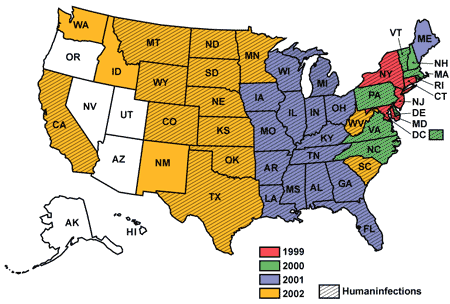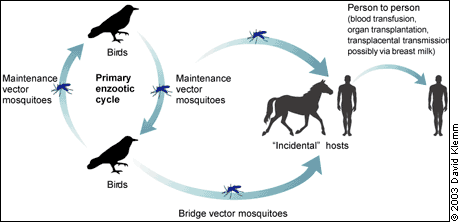ELISA Diagnosis of West Nile Virus
News of West Nile Virus
Thus far in 2012, 47 states of USA have reported West Nile virus infections in people, birds, or mosquitoes. A total of 1118 cases of West Nile virus disease in people, including 41 deaths, have been reported to CDC. Of these, 629 (56%) were classified as neuroinvasive disease (such as meningitis or encephalitis) and 489 (44%) were classified as non-neuroinvasive disease.
History of West Nile Virus
The 1118 cases reported thus far in 2012 is the highest number of West Nile virus disease cases reported to CDC through the third week in August since West Nile virus was first detected in the United States in 1999. Approximately 75 percent of the cases have been reported from 5 states (Texas, Mississippi, Louisiana, South Dakota, and Oklahoma) and almost half of all cases have been reported from Texas.

Diagnosis of West Nile Virus
The best laboratory test for diagnosing West Nile virus infection is an IgM antibody–capture enzyme-linked immunosorbent assay (MAC-ELISA) of serum or CSF collected eight to 21 days after the onset of symptoms. This simple, sensitive (95 percent) diagnostic test is available commercially and through local or state health departments.
State public health laboratories usually can perform the test within 24 to 36 hours of submission. Testing of serum in the acute and convalescent phase (i.e., sera collected at least two weeks apart) may provide laboratory confirmation of infection. Since IgM antibody usually does not cross an intact blood-brain barrier, a single West Nile virus–specific IgM positive antibody titer in CSF can confirm central nervous system infection.

